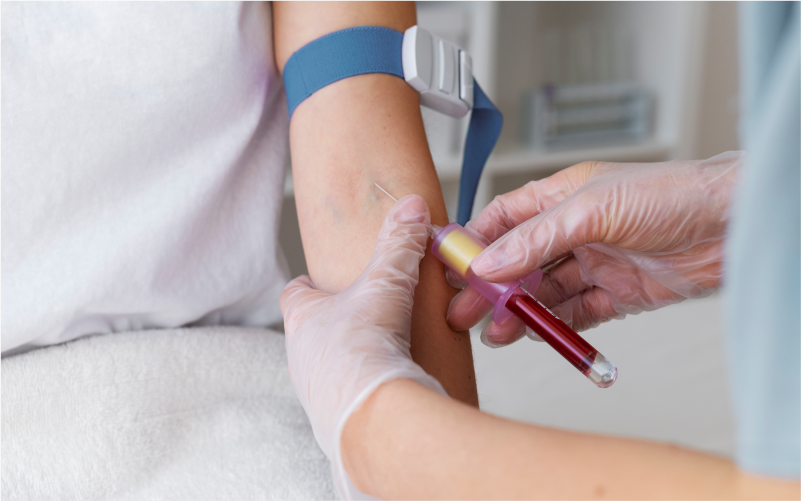Adrenal Venous Sampling
Adrenal venous sampling (AVS) is a specialized procedure used to diagnose and localize certain adrenal gland disorders, such as primary aldosteronism (Conn’s syndrome) or Cushing’s syndrome. The adrenal glands, located on top of the kidneys, produce hormones that regulate various bodily functions. AVS helps determine the hormone levels within the adrenal glands, aiding in the diagnosis and treatment of these disorders. Here’s an overview of adrenal venous sampling, including how it works, when it is needed, and potential risks and complications.

How it Works
During adrenal venous sampling, a catheter is inserted into a vein, typically in the groin area or neck. Using X-ray or other imaging guidance, the catheter is then carefully guided to the adrenal veins, which drain blood from the adrenal glands. Blood samples are collected from both adrenal veins, as well as a reference sample from a nearby vein. The collected blood samples are analyzed to measure hormone levels, such as aldosterone or cortisol, in order to determine their production and secretion patterns within the adrenal glands.
When it is Needed
Adrenal venous sampling may be recommended in the following situations:
Primary aldosteronism: To differentiate between unilateral (one-sided) and bilateral (both sides) adrenal gland involvement, helping to guide treatment decisions.
Cushing’s syndrome: To identify the source of excess cortisol production, which can be due to an adrenal gland tumor or pituitary gland disorder.
Adrenal incidentaloma: To evaluate adrenal masses incidentally discovered on imaging studies, helping to determine if they are hormonally active and require further intervention
Risks and Complications
Adrenal venous sampling is a specialized procedure that carries some risks and potential complications:
Bleeding: There is a small risk of bleeding or hematoma formation at the catheter insertion site. The healthcare provider takes precautions to minimize this risk and applies pressure or uses other techniques to stop any bleeding.
Infection: Although rare, there is a slight risk of infection at the catheter insertion site. Sterile techniques are employed during the procedure to minimize this risk.
Discomfort or pain: Some individuals may experience discomfort or pain at the catheter insertion site or during the procedure. Local anesthesia or mild sedation may be used to minimize discomfort.
Blood vessel injury: In rare cases, the catheter insertion may cause damage to blood vessels. The use of imaging guidance helps minimize this risk, but there is still a small possibility of injury.
It’s important to note that adrenal venous sampling is typically performed by experienced healthcare professionals who take appropriate precautions to ensure safety and minimize discomfort. The benefits of the procedure, such as accurate diagnosis and tailored treatment, generally outweigh the potential risks and complications.
Overall, adrenal venous sampling is a valuable diagnostic tool for certain adrenal gland disorders. It helps determine hormone production patterns within the adrenal glands, aiding in the diagnosis and treatment planning. If you have specific concerns or questions about the procedure, it’s recommended to discuss them with your healthcare provider beforehand. They can provide you with more personalized information based on your individual health needs.







